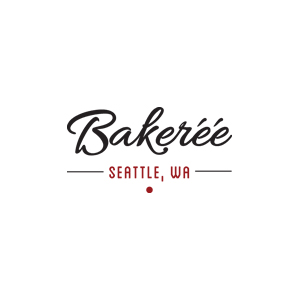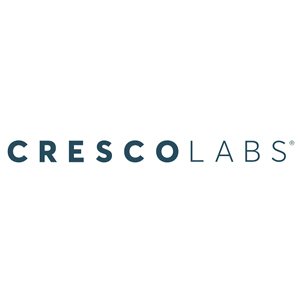\\\\ Top Cannabis retailing companies \\\\
\\\\\\\\\ Top Cannabis retailing companies \\\\\\\\\
-
Market 96 Neighborhood Dispensary
Market 96 Neighborhood Dispensary blends the warmth of a local market with the sophistication of modern cannabis retail. A woman- and Black-owned social equity enterprise, it offers curated cannabis and lifestyle products delivered through exceptional customer service and strong community connections. It brings an inviting, neighborhood-inspired experience that redefines the cannabis retail experience.
-
Jardín Las Vegas
Jardín Las Vegas is a luxury cannabis dispensary offering a hospitality-driven experience backed by expert education. Its 20,000-square-foot flagship blends upscale design with diverse, highly trained staff, guiding guests through a full range of products to ensure they leave with the right choice.
-
Bonsai Cultivation
Bonsai Cultivation crafts award-winning recreational cannabis in Colorado, celebrated for quality, sustainability and on-time wholesale deliveries. With a state-of-the-art facility and passionate team, Bonsai blends innovative cultivation with supplying dispensaries and brands seeking premium flower, pre-rolls and white-label services, all while keeping environmental impact low.
-
The Bakeree
The Bakeree is Seattle’s award-winning cannabis dispensary, serving connoisseurs since 2011. This isn’t your average pot shop; it’s obsessed with quality and rejects anything with synthetic pesticides or additives. Its science-savvy budtenders speak the language, whether customers seek ‘gas’ or citrus-forward hybrids. From seed to smoke, they deliver extraordinary cannabis experiences.
-
Cresco Labs
Cresco Labs, founded in 2013, is a Chicago-based, vertically integrated cannabis company operating in multiple U.S. states. It offers a diverse product portfolio, including brands like Cresco, High Supply, and Mindy's Edibles. Through its Sunnyside dispensaries, it provides both medical and recreational cannabis products. In 2024, it reported revenue of $724 million and achieved record operating cash flow of $132 million.
-
Flowhub
Flowhub, founded in 2015 by Kyle Sherman, is a leading cannabis retail software company. It provides dispensaries with compliance, point of sale, inventory tracking, and business intelligence solutions. Processing over $3 billion in annual cannabis sales, it empowers more than 1,000 retailers to enhance operations and customer experiences.
-
IndicaOnline
IndicaOnline, established in 2011, offers a cloud-based point-of-sale platform for the cannabis industry. Its software assists dispensaries with compliance, inventory management, and delivery operations. Features include patient verification, inventory tracking, and automated state reporting. Headquartered in Los Angeles, it serves clients across the United States, Canada, and Europe.
-
MyBud POS
MyBud POS provides an all-in-one point of sale system tailored for cannabis dispensaries. It offers durable hardware and user-friendly software to streamline operations, enhance customer experiences, and ensure compliance with industry regulations. Its seamless integration with systems like Metrc and BioTrack simplifies reporting and inventory management, supporting dispensaries in the rapidly growing cannabis market.
-
Sublime Cannabis Co.,
Sublime Cannabis Co., based in Mashpee, Massachusetts, is a family-owned dispensary offering recreational cannabis products. It was founded by CEO Robert Catania, a Culinary Institute of America graduate with extensive hospitality experience, and President Evan Lehrer, an urban planner with cannabis regulatory expertise. The company emphasizes quality, locally grown, full-spectrum cannabis, aiming to elevate the shopping experience for all customers.
More in News
The Evolution of Legal Cannabis Markets Around the World
Wednesday, November 26, 2025
FREMONT, CA: The global legal cannabis market is rapidly growing as more countries and jurisdictions move towards legalization. This shift is fueled by changing public perceptions, advancements in medical research, and a rising acknowledgment of cannabis as a significant economic driver. Consequently, traditional sectors like agriculture, retail, and pharmaceuticals are innovating in areas such as edibles, medical treatments, and wellness products that incorporate cannabis. To capitalize on the opportunities presented by this expanding industry, stakeholders must understand its dynamics as the global market continues to evolve. Drivers of Growth in the Legal Cannabis Market Legalisation Trends: The expansion of the legal cannabis market is significantly driven by increasing legalisation across regions. As more countries and states legalise both medical and recreational cannabis, the market naturally grows. Public acceptance, especially of cannabis’s medical benefits, has fostered a shift toward legalisation, making products more accessible and boosting consumer confidence. This, in turn, attracts new businesses and investors, further fueling market innovation. Health and Wellness Demand: Growing interest in health and wellness is another crucial factor in the cannabis market's expansion. Consumers, particularly millennials, are increasingly seeking alternative pain relief and solutions for anxiety. Cannabis products, such as CBD oils and edibles, provide therapeutic benefits without psychoactive effects, making them highly appealing to health-conscious individuals. Innovation in Products: The cannabis industry is seeing a surge in product innovation, with companies diversifying offerings beyond traditional flowers. New products such as edibles, beverages, topicals, and oils cater to various consumer preferences. Advanced extraction and formulation techniques ensure consistent, high-quality effects, encouraging new and seasoned consumers to explore different consumption methods, further boosting market growth. Increased Investments: The cannabis sector has attracted significant investment due to its promising growth potential. Both large enterprises and small startups are raising capital to expand, innovate, and enhance marketing efforts. These investments also fund research and development, which is essential for product innovation. However, compliance with regulatory requirements remains crucial as the industry matures and venture capital continues to flow into the sector. Altered Social Perception: Changing social attitudes toward cannabis use have significantly impacted the market. As the stigma surrounding cannabis fades, more consumers embrace its medical and recreational benefits. Educational campaigns and positive media coverage have reshaped public opinion, fostering broader acceptance. Additionally, celebrity endorsements and high-profile advocates further encourage cannabis use, opening up new growth avenues for the market. With more significant investments flowing into the sector and shifting social perceptions fostering broader acceptance, the industry is transforming traditional sectors and creating new opportunities. However, as the market matures, it will be essential for businesses to navigate regulatory challenges and maintain a focus on compliance to ensure sustained success. As the legal cannabis market expands, its influence will continue to reshape industries and create a significant economic impact worldwide.
Factors Driving Excellence in the Cannabis Sector
Wednesday, November 26, 2025
Fremont, CA: Cannabis extraction plays an integral part in the cannabis industry by enabling the separation of valuable compounds. Producers incorporate the extracted substances into various products, including oils, edibles, tinctures, and concentrates. As the cannabis market progresses, advancements in extraction technologies and techniques are continually influencing it. The extraction methods constantly evolve, with innovation leading to new trends that enhance product quality, efficiency, and user experience. Cannabis extraction is increasingly shifting toward cleaner, more efficient methods: solventless techniques like rosin pressing and dry sift. These employ mechanical means such as pressure or heat to extract cannabinoids and terpenes without using chemicals and yield a pure, high-quality product that retains the full spectrum of the therapeutic compounds within the plant. Advanced CO2 extraction technology, especially supercritical CO2 extraction, is an increasingly popular technique for obtaining high-quality cannabis extracts. This technique uses carbon dioxide at a supercritical state with both liquid and gas properties to extract cannabinoids and terpenes from plant material. This method is considered safe and effective as it does not involve dangerous solvents and can be precisely controlled to target the desired compound. The extraction yields clean, potent, and solvent-free extracts. Advances in extraction technology mean the art of distillation has become increasingly refined, where cannabis is distilled based on its boiling point, separating the compound, which forms the product with high concentrations of cannabinoids. This distillation technique has proven quite efficient at making pure distillates of THC or CBD and has made edibles, vape cartridges, and topicals extremely popular in recent times. The high and increasing demand for CBDs is because of their proven therapeutic benefits. Because of this, cannabis extraction procedures are being improved to refine the production of CBD-high extracts that are both concentrated and safe for human consumption. These innovations have eased consumers' access to targeted cannabis products that cater to a specific health need. This has included pain relief, anxiety reduction, and sleep improvement. The cannabis extraction industry is going for sustainability and efficiency since traditional methods are resource-intensive. New technologies like closed-loop systems are being developed to minimize environmental impact and maximize yields. These systems recycle solvents, reduce waste, and improve scalability. This allows producers to meet the growing demand while maintaining product quality and consistency, improving the extraction process's sustainability. Increased consumer demands with evolving consumer preferences, as well as the further growth of the cannabis industry, push cannabis extraction into more significant innovation. To compete with rising demands in the highly competitive cannabis market, producers continue investing in new technologies to differentiate their products while fulfilling those high-quality demands in extracts. Be it through solventless methods, CO2 extraction, distillation, or even sustainability practices, the art and science behind cannabis extraction are accelerating so fast to give rise to a different kind of future in cannabis products and experiences.
Sustainability in Medical Cannabis Cultivation and Packaging
Wednesday, November 26, 2025
The medical cannabis industry is driven by consumer demand and a growing awareness of its environmental footprint. As a high-growth agricultural sector, medical cannabis cultivation and its subsequent processing and packaging present unique resource challenges. This transformation is crucial for securing long-term viability and aligning the industry with the restorative, wellness-focused image of medicinal products. Eco-Conscious Cultivation: Maximizing Efficiency and Minimizing Input The cultivation stage has historically been the most resource-intensive phase of cannabis production, particularly in terms of energy consumption and water use. In response, the industry is embracing advanced, environmentally responsible practices designed to improve crop performance while substantially reducing ecological impact. A significant area of focus is energy and atmospheric management. Indoor cultivation, long valued for its ability to deliver consistent product quality, has traditionally relied on high energy use for lighting and climate control. The shift toward sustainable operations is characterized by widespread adoption of high-efficiency technologies. Modern LED lighting systems are replacing high-pressure sodium fixtures, offering significantly lower electricity consumption and precise spectral tuning that aligns light output with the crop’s developmental needs. Climate control is likewise transforming as automated, sensor-driven HVAC systems leverage predictive algorithms to maintain optimal temperature and humidity without excessive energy use. Many facilities are also integrating renewable power sources, including onsite solar and wind installations, to reduce reliance on the grid and meaningfully lower their carbon footprint. Water stewardship has become equally critical, as cannabis remains a water-intensive crop. Cultivators are implementing precision irrigation and closed-loop systems to manage resources more responsibly. Drip irrigation techniques deliver water and nutrients directly to the root zone, limiting evaporation and runoff. Hydroponic and aeroponic systems are also gaining prominence, enabling the recirculation of water and nutrient solutions while using a fraction of the water required for conventional soil-based cultivation. These systems also support the cleanliness and consistency necessary for medical-grade production. Complementing these methods, growers are investing in advanced water recycling and harvesting solutions. Technologies such as reverse osmosis, ozone purification, rainwater harvesting, and condensate recovery from HVAC equipment help establish a circular water management model. In nutrient delivery, sustainable fertilization practices are increasingly prioritized. Controlled-release nutrient programs and the use of organic inputs, including compost teas and vermicompost, enhance plant health while reducing dependence on synthetic fertilizers and limiting nutrient runoff into surrounding environments. Embracing Biological Control: Integrated Pest Management (IPM) The stringent quality requirements for medical cannabis production demand crops that are exceptionally clean and free of contaminants. Historically, this has driven reliance on synthetic pesticides; however, the industry’s shift toward sustainability has accelerated the adoption of biological and ecological methods. Integrated Pest Management (IPM) has become central to this transition, emphasizing preventive strategies and natural control mechanisms over chemical intervention. A key component of IPM is the use of biological controls, which introduce beneficial insects and microorganisms to regulate pest populations. Predator mites, parasitic wasps, and beneficial fungi are commonly deployed to suppress threats such as spider mites and aphids. By establishing a balanced, self-regulating ecosystem within the cultivation environment, growers can mitigate infestations without compromising product integrity. Environmental management also plays a critical role in reducing pest and pathogen pressures. Cultivators strategically adjust variables such as temperature, humidity, and airflow to create conditions that are inhospitable to pests. This proactive approach significantly minimizes reliance on chemical treatments while maintaining a stable growing environment. In addition, principles of organic and regenerative agriculture are being incorporated into soil and substrate management practices. These methods include using living soil amendments, cover cropping when applicable, and techniques that foster greater soil biodiversity. A strong focus on soil health enhances plant immunity and overall resilience, enabling the production of robust, high-quality cannabis without synthetic chemical inputs. Packaging Evolution: Material Innovation and Waste Reduction Once harvested and processed, medical cannabis products must be packaged in a manner that satisfies stringent requirements for child resistance, tamper evidence, and product preservation. The industry continues to evolve rapidly, with a strong emphasis on innovative solutions that balance regulatory compliance with environmental responsibility. A central area of progress involves adopting materials that support a circular economy. Manufacturers are increasingly moving away from single-use virgin plastics and embracing renewable, recycled, or compostable alternatives. Plant-based and bio-plastic materials—such as those derived from hemp, sugarcane, cornstarch, or mushroom mycelium—are gaining traction because they offer biodegradable or commercially compostable end-of-life pathways not available with conventional plastics. In parallel, the integration of post-consumer recycled (PCR) content into plastics and paperboard has become a significant sustainability driver. By incorporating high levels of PCR materials, brands help reduce reliance on virgin resources and divert substantial waste from landfills. Traditional sustainable options, including glass and aluminum, also remain essential for products such as flowers and concentrates. These materials are highly recyclable, and ongoing innovations focus on reducing their environmental impact through lighter-weight glass designs and aluminum with elevated recycled content. Packaging innovation extends beyond materials to include design strategies and digital enhancements that minimize waste and improve the patient experience. Right-sizing and lightweighting initiatives ensure packaging uses only the material necessary to maintain compliance and product integrity, thereby reducing resource consumption. Reusable and refillable systems are also emerging as a meaningful approach to waste reduction, encouraging patients to return durable containers for refill or secondary use. Additionally, digital labeling technologies—such as QR codes and electronic information platforms—enable brands to provide comprehensive product details, testing documentation, and usage guidance without relying on extensive printed materials. This reduces paper waste while enhancing transparency and accessibility for patients. The intersection of eco-friendly cultivation and innovative packaging is defining the new standard for medical cannabis. By prioritizing resource efficiency, biological controls, and circular material innovation, the industry is not only mitigating its environmental impact but also strengthening its commitment to patient health and planetary well-being, positioning itself as a forward-thinking and responsible leader in the regulated agricultural sector.
Designing Resilient Cannabis Facilities for a Global Market
Wednesday, November 26, 2025
Fremont, CA: The legalized cannabis industry is unique—it operates at the intersection of high-tech agriculture, pharmaceutical-grade manufacturing, and heavily regulated security. This complexity has elevated the role of the architect from mere space planner to a specialized consultant, deeply knowledgeable in local, state, and federal cannabis regulations. Cannabis-focused architects are now the critical link, designing cultivation and processing facilities that are not just operational but are compliant, highly efficient, and scalable for future growth. The Dual Imperative: Compliance and Security Regulatory compliance forms the backbone of every cannabis facility design, with even minor errors leading to significant delays, financial penalties, or potential loss of licensure. Architects must navigate a dense regulatory framework governing site selection, internal circulation, and operational controls. This begins with adhering to zoning and location requirements that typically restrict cannabis operations to industrial or designated agricultural areas and enforce strict buffer zones from sensitive community spaces. Once the site is secured, the internal layout must support seed-to-sale tracking through a logical, unidirectional workflow—from propagation and vegetative growth to flowering, harvesting, processing, and secure storage—ensuring that every product is accounted for throughout its lifecycle. Contamination control adds another layer of complexity, requiring cleanroom-grade design elements, such as antimicrobial surfaces, sealed fixtures, and controlled-access airlocks, to mitigate the risk of pathogens and mold. Security, a legally mandated element of cannabis facility architecture, must be integrated from the earliest design phases. Architects incorporate strict access control systems, including badge or biometric scanners, to restrict entry to sensitive areas such as grow rooms and vaults. Comprehensive CCTV networks with 24/7 surveillance coverage and defined retention requirements ensure complete visibility across critical zones, supported by layouts that provide clear sightlines. Secure storage solutions—ranging from reinforced vaults to climate-controlled rooms—are specified to protect both raw materials and finished products in accordance with state regulations. Together, these compliance and security measures form a robust foundation that upholds product integrity, worker safety, and regulatory accountability. Maximizing Operational Efficiency Beyond meeting regulatory standards, modern cannabis facility design prioritizes operational efficiency, yield optimization, and long-term scalability. Central to this approach is precision environmental control, with Mechanical, Electrical, and Plumbing (MEP) systems representing the most critical engineering components. Advanced HVACD systems regulate temperature, humidity, vapor pressure deficit, and CO₂ levels, while simultaneously managing the substantial heat loads generated by lighting and plant respiration. Airborne contaminants and odors are mitigated through high-efficiency filtration and carbon systems, and energy-efficient LED lighting—capable of delivering customizable spectrums—has become the preferred solution for boosting plant performance while reducing energy consumption. Architects further enhance operational efficiency through space-optimization strategies, such as multi-tier vertical farming, which increases production per square foot but requires thoughtful structural planning and tailored HVACD configuration. Modular facility design ensures adaptability, enabling operators to expand or reconfigure cultivation and processing zones as market demands evolve. Streamlined workflows reduce labor intensity by strategically positioning workspaces—including trimming, packaging, and sanitation areas—to minimize movement and handling time. The discipline of cannabis-focused architecture has become integral to the sector’s long-term success, embedding regulatory compliance and operational efficiency into every stage of facility design. These specialists deliver more than functional structures; they engineer scalable, resilient environments that support disciplined, high-yield operations. The future of cannabis cultivation increasingly resembles precision manufacturing, requiring advanced environmental controls, optimized spatial planning, and intelligent automation to drive productivity and cost efficiency. As regulatory frameworks evolve and global demand expands, collaboration between operators and dedicated cannabis architects will be essential to addressing emerging challenges and advancing a sustainable, competitive industry.
Standardizing Genetic Authenticity in Cannabis Seed Shipping
Wednesday, November 26, 2025
The maturation of the global cannabis sector has precipitated a fundamental shift in how the industry approaches its most critical asset: genetics. As the market transitions from fragmented, localized operations to a sophisticated global agricultural economy, the movement of cannabis seeds is evolving into a high-tech, data-driven discipline. At the helm of this evolution are Fourth-Party Logistics (4PL) providers and advanced supply chain management firms, which are redefining the standards of efficiency, visibility, and genetic preservation. While Third-Party Logistics (3PL) providers focus on the physical execution of transport—moving a package from point A to point B—the emerging 4PL model introduces a higher level of strategic oversight. These advanced firms act as the central nervous system of the supply chain, integrating resources, capabilities, and technologies to design and run comprehensive supply chain solutions. For the cannabis seed market, this means establishing an infrastructure comparable to that of the pharmaceutical or high-value agritech sectors, prioritizing the integrity of living tissue through precision and predictive planning. The Digital Integration of the Seed Supply Chain The most significant contribution of advanced logistics to the cannabis seed industry is the digitization of the supply web. 4PL providers are deploying sophisticated "control tower" methodologies that offer end-to-end visibility, effectively creating a digital twin of the physical supply chain. This digital integration begins at the source, where genetic breeders and seed banks interface directly with logistics platforms to initiate a seamless chain of custody. In this modernized ecosystem, every packet of seeds is tracked not merely as a distinct SKU, but as a data-rich asset. Advanced logistics firms use Internet of Things (IoT) sensors and radio-frequency identification (RFID) technology to monitor inventory movement in real time. This level of granularity enables continuous transmission of data on location, handling status, and transit velocity. By aggregating this data, 4PLs use artificial intelligence and machine learning algorithms to predict optimal routing, ensuring that sensitive genetic material spends the least time in transit. Digital integration facilitates a standardized approach to verification. As the industry scales, the need to guarantee genetic authenticity becomes paramount. Advanced logistics systems are incorporating blockchain-enabled ledgers that record every touchpoint in the seed’s journey. This immutable record ensures that the "genetic identity" of a seed shipment remains inextricably linked to its physical movement, allowing commercial cultivators to verify that the stock arriving at their facility matches the precise genomic profile ordered. This synchronization of physical goods and digital information creates a frictionless flow of commerce, enabling automated inventory replenishment and dynamic resource allocation across global networks. Specialized Handling and Environmental Preservation Beyond the digital realm, the physical realities of shipping cannabis seeds demand a level of care that goes far beyond standard agricultural logistics. Seeds are living organisms, and environmental conditions directly influence their viability during storage and transport. The state of the industry is currently defined by the adoption of "intelligent cold chain" solutions, orchestrated by logistics partners who understand the biological imperatives of the product. Advanced logistics firms are standardizing the use of climate-controlled environments that extend from the warehouse floor to the final mile of delivery. Unlike traditional shipping, which may expose cargo to fluctuating temperatures and humidity, the modern seed supply chain uses smart containers equipped with active atmospheric controls. These containers maintain specific temperature and humidity ranges ideal for seed dormancy, ensuring high germination rates upon arrival. This focus on preservation also extends to packaging innovation. Logistics providers are integrating automated packaging solutions that utilize hermetically sealed, tamper-evident materials designed to protect against light exposure, moisture ingress, and physical shock. In high-volume operations, robotic fulfillment centers managed by logistics partners ensure that seeds are counted, packaged, and crated in sterile environments, eliminating human error and contamination risks. The result is a "white-glove" service standard applied at an industrial scale, treating cannabis seeds with the same rigor reserved for vaccines or sensitive biological samples. This adherence to strict environmental protocols ensures that the product delivered is biologically identical to the product that left the breeder, regardless of the distance traveled. Strategic Globalization and Network Optimization As demand for diverse genetics becomes global, 4PL providers are structuring complex, multimodal transportation networks that span continents. This involves strategically placing forward-stocking locations and distribution hubs in free trade zones or logistics-friendly jurisdictions. By decentralizing inventory and placing popular genetic stock closer to key regional markets, advanced logistics firms drastically reduce delivery lead times and carbon footprints. Dynamic routing capabilities power this network optimization. 4PLs utilize predictive modeling to analyze global traffic patterns, carrier capacity, and seasonal weather impacts to select the most efficient mode of transport—whether air, ground, or sea. This agility allows the supply chain to pivot instantly; if a specific air freight route becomes congested, the system automatically reroutes shipments through alternative hubs without manual intervention. This globalized approach further streamlines the customs and clearance process. Advanced logistics firms integrate regulatory compliance data directly into shipping manifests. By automating the generation of necessary documentation—such as phytosanitary certificates and origin declarations—these systems ensure a smooth passage through international borders. This capability transforms the seed trade from a disjointed series of shipments into a cohesive, flowing river of commerce. The emphasis is on "intermodal" harmony, where the handoff between an international air carrier and a local ground courier is invisible to the end recipient and is characterized by speed and reliability. The seamless convergence of biology and technology is writing the future of cannabis seed shipping. 4PL providers and advanced logistics firms have successfully raised the industry standard, moving away from ad hoc transportation toward a highly engineered, data-centric ecosystem. Through the digital integration of supply chains, the implementation of rigorous environmental preservation techniques, and the strategic optimization of global networks, these entities are ensuring that the foundation of the cannabis industry—the seed itself—is handled with the precision it requires. As these logistical frameworks continue to mature, they promise a future where genetic accessibility is immediate, reliable, and standardized on a global scale.
Medical Cannabis Logistics: Specialized Handling for Patient-Centered Distribution
Wednesday, November 26, 2025
The trajectory of the medical cannabis industry has shifted decisively toward pharmaceutical rigor. As research validates the therapeutic potential of cannabinoids, the supply chain supporting this ecosystem has evolved from simple freight transport into a sophisticated, data-driven discipline. Today, medical cannabis logistics represents a convergence of high-security transport, cold-chain mastery, and patient-centric service models. Precision Temperature Control and Quality Preservation The logistics of medical cannabis are driven primarily by the widespread implementation of pharmaceutical-grade environmental controls. As a biologically active substance, the therapeutic value of cannabis depends on the preservation of key cannabinoids such as THC and CBD, as well as volatile terpenes that define its medicinal profile. These compounds are susceptible to variations in temperature, humidity, and light. In response, the industry has advanced beyond conventional cooling systems and now employs active cold-chain solutions comparable to those used for handling vaccines and other biologics. Modern transportation fleets are equipped with dual- or multi-zone climate control, enabling a single vehicle to carry multiple product categories while maintaining precise environmental parameters. For example, dried flower typically requires controlled humidity to prevent desiccation, while concentrates and edibles often demand cooler, drier conditions to maintain stability. These vehicles consistently maintain narrow temperature ranges—typically between 18°C and 20°C for flowers—regardless of external environmental conditions. Continuous environmental monitoring has become a foundational standard across the sector. Smart sensors embedded in pallets and individual shipping containers record temperature and relative humidity in real time and transmit data to centralized monitoring systems. This allows logistics teams to ensure that products remain within prescribed safety parameters throughout transport. The resulting telemetry not only supports quality assurance for receiving dispensaries and pharmacies but also provides a verifiable audit trail that demonstrates adherence to Good Distribution Practice (GDP) requirements. Advances in packaging technologies further strengthen the integrity of the supply chain. Current distribution frameworks employ materials engineered to regulate oxygen exchange and block UV exposure, thereby protecting the product's chemical stability. Humidity-control components are routinely integrated into bulk containers to maintain a consistent internal microclimate during long-distance shipments. This approach to environmental management ensures that patients ultimately receive medical cannabis that preserves its complete chemical composition and therapeutic efficacy. Integrated Technology and Seed-to-Sale Transparency The modern medical cannabis supply chain relies on highly advanced digital infrastructure to meet stringent regulatory and security requirements. As medical cannabis remains a controlled substance in many regions, the sector has developed an integrated digital ecosystem that delivers complete transparency across all operational stages. This interconnected framework links cultivation sites, manufacturing facilities, testing laboratories, logistics providers, and dispensing outlets, forming a continuous digital thread that ensures end-to-end visibility and accountability. A key component of this infrastructure is real-time track-and-trace capability. Industry participants rely on sophisticated Enterprise Resource Planning (ERP) platforms equipped with Radio Frequency Identification (RFID) technology. Each batch, package, and, in many cases, each unit is tagged and continually scanned throughout its journey—from the production floor to transport vehicles and ultimately to secure storage at dispensaries. This continuous flow of data updates the central ledger in real time, providing an up-to-the-second view of product location and movement. Such precise tracking enhances inventory control, minimizes the risk of stock shortages, and enables logistics teams to maintain full situational awareness at every moment. Regulatory compliance is further strengthened through automated reporting systems embedded within logistics software. These systems generate manifests, bills of lading, and chain-of-custody documentation aligned with regional legal requirements. Digital confirmation at the point of delivery triggers automatic inventory reconciliation and secure archival of transaction records. By removing manual data entry, the process reduces the likelihood of errors and ensures consistent, uninterrupted operational flow. The Evolution of Last-Mile Delivery and Patient Access The logistics landscape for medical cannabis is undergoing a significant transformation with the industry's shift toward direct-to-patient engagement. For many patients—particularly those managing mobility limitations, chronic pain, or severe anxiety—visiting a physical dispensary can be challenging. In response, logistics providers are establishing specialized last-mile delivery networks that emulate the standards and sensitivity of home healthcare services. A defining characteristic of this evolution is the adoption of a white-glove service model. Last-mile operations in this sector differ notably from conventional parcel delivery, emphasizing professionalism, discretion, and patient comfort. Delivery personnel receive training not only in transportation protocols but also in customer service and privacy practices. Vehicles are typically unmarked to safeguard confidentiality, and the handover process mirrors the discretion expected in pharmaceutical deliveries, helping normalize the experience of receiving prescribed medication at home. To further enhance convenience, providers increasingly rely on advanced routing and scheduling systems. These technologies optimize delivery windows to reduce the stress associated with waiting for time-sensitive shipments. Because medical cannabis requires a direct handoff rather than an unattended drop-off, platforms now offer real-time driver tracking, automated notifications, and secure digital identity verification to ensure a streamlined, dependable process. Security measures traditionally reserved for bulk transport have also been adapted for last-mile operations. Delivery vehicles function as mobile vaults, equipped with secured storage compartments that unlock only at the designated GPS-verified location. This approach preserves the integrity of the chain of custody through the final point of distribution. Additionally, integrated mobile point-of-sale systems enable secure, cashless transactions at the patient's doorstep, providing patients with a seamless, compliant end-to-end delivery experience. Medical cannabis logistics today is defined by a commitment to precision, security, and care. The industry has successfully transitioned from ad-hoc transport solutions to a highly structured, pharmaceutical-grade supply chain. As the industry continues to expand, these logistical frameworks provide the necessary foundation for scalability. They ensure that as patient counts grow and product varieties expand, the fundamental promise of medical cannabis—safe, effective, and reliable relief—is delivered consistently, every single time.



















